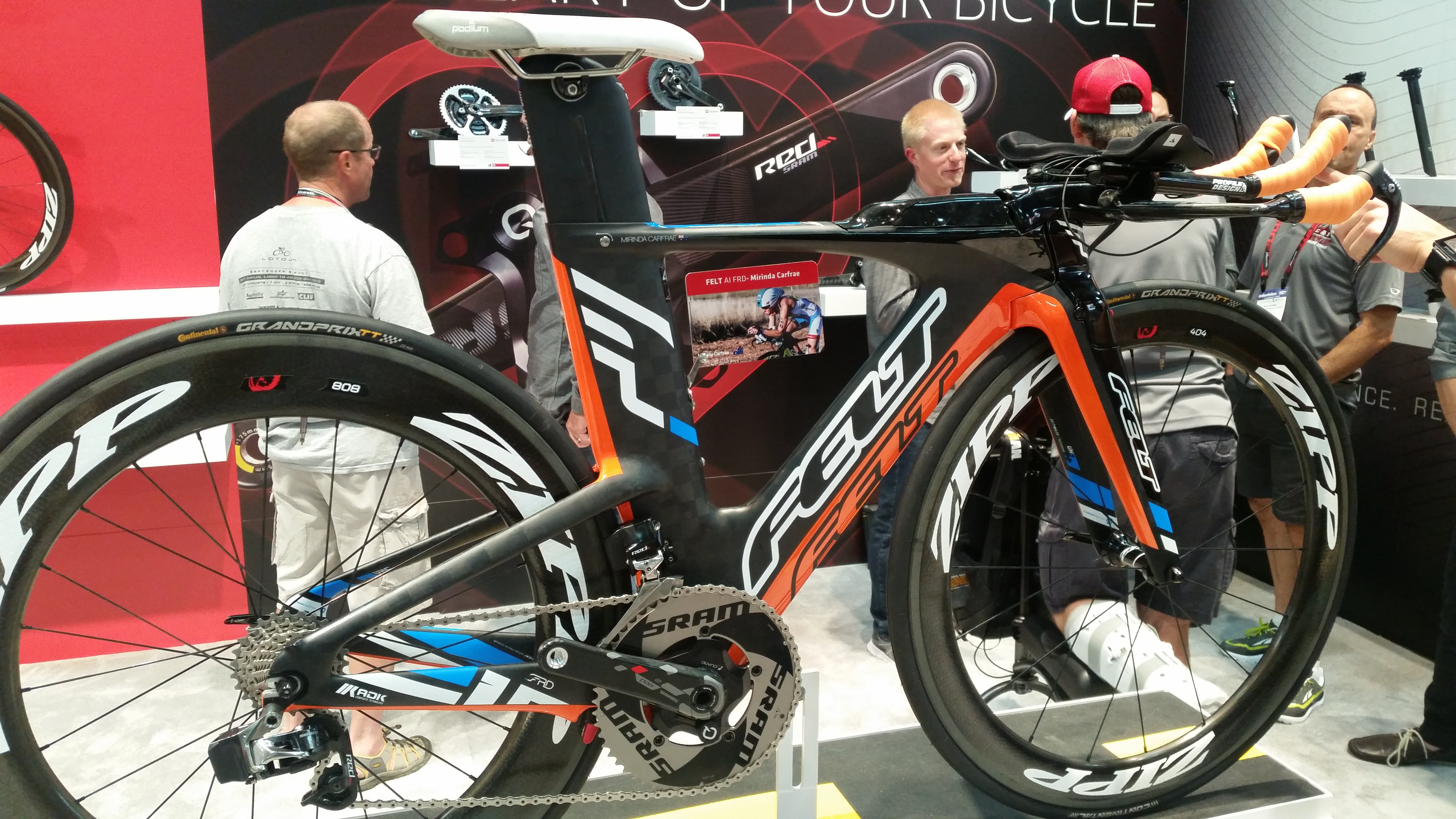SRAM Red eTap: Why It’s A Triathlon Game-Changer

Mirinda Carfrae’s eTap equipped Felt IA. The three-time Ironman world champion will use the technology next month in Kona.
With the recent debut of their new wireless shifting, SRAM has created quite a buzz in both the cycling and triathlon worlds. Many have said that wireless shifting will be a game changer for time trial bikes, but why?
SRAM Red eTap is one of the biggest component advancements seen since Shimano released Di2, and the technology is just downright cool. It makes bikes look better, it makes shifting fun and everyone can’t wait to get their hands on it. While some may want eTap purely because it’s the latest and greatest, there is much more to it than looks and buzz.
Ease of Installation
Time trial bikes have a reputation for cable routing that is less than optimal. Some companies have decided to run cable housing through the entire frame, while others try to save weight and place cable stops throughout their bikes. Neither of these options provide a simple experience for mechanics to work with, let alone athletes attempting to do their own maintenance. For this reason, many have opted for Shimano’s electronic group, Di2; but while there are no cables and housing, there’s still the challenge of routing wires, hiding junction boxes and making sure connections are secure. This is one of the main reasons eTap shines: minimal wires. While the time trial version of eTap is not completely wireless, it is dramatically more simple than the alternatives.
While the front and rear derailleurs are both wireless, time trial bikes require two wired components: Blips and a BlipBox. The Blipbox essentially houses all of the electronics that the road shifters do, converting the wired information from the blips into a wireless signal that goes to the derailleurs. Blips are the shift buttons that can be placed anywhere an athlete desires. They can easily be placed on aerobars or basebars on the outside of bar-tape, or they can also be wrapped over for a cleaner look. Interestingly the Blipbox can also be used to shift either derailleur if the Blips somehow become unplugged.
After the Blips are stuck where they are desired, the Blipbox is mounted either with the supplied mount or placed in a more stealthy location, and the derailleurs are installed, all that is left is a quick pairing mode and minor derailleur adjustments (all done electronically). No cables or wires through frames, no cable tension and limit adjustments, just a quick 15 minutes or so of your time.
Travel
Another plus of the wireless system comes with bike travel. Even with the best bike cases, bikes need to be disassembled (or partially disassembled) in order to fit in the case. With this disassembly and packing, not only is it hard to keep all of the cables from being compressed and out of the way, but derailleurs are easily bumped out of adjustment. With eTap, you never have to worry about cables getting in the way, and if it just so happens that the bike gets mistreated, the system can be re-adjusted while riding. Yes, while on the bike, you can adjust your derailleurs with a simple protocol.
Shift Logic
Whether you’re 100 miles into an Ironman bike or hammering on a local group ride, the last thing you want to have to do is think about shifting. While traditional shifting may seem easy enough, SRAM believes that their Formula 1 inspired shifting will make your rides and races that much easier. It’s very simple: one blip is pressed for an easier gear, the other is pressed for harder, and both are pressed at the same time for a front derailleur shift. Very intuitive and simple.
The Future
While few companies are already making eTap-specific TT bikes (such as Jan Frodeno’s Ironman 70.3 Worlds winning Canyon), the sky’s the limit for the future of wireless-specific bikes. With cables and wires, frames have to be structured in certain ways to allow for holes, which changes what companies can do with aero shapes. Along with this, bike manufacturers have spent years creating components and frames that are built in order to hide cables and wires, but in their absence, there becomes an opportunity of new tube shapes.
As far as cost, for those currently running SRAM Red but want to upgrade, $1580 includes everything to go wireless. Those who have yet to make the leap to Red or are looking to purchase an entire new group can purchase the complete Aero system (including all of the necessary mechanical parts) for $2835.